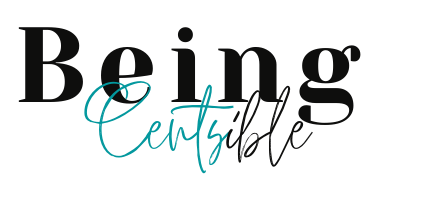If you’re like most people, the word “budget” probably doesn’t bring up warm and fuzzy feelings. It seems a daunting task, especially if you’ve never done it before. A monthly budget seems restrictive, but it can give you more flexibility in spending money.
Let me ask you this:
- Are your expenses more than your monthly income?
- Do you have trouble meeting your financial goals?
If that’s you, I understand, because I’ve been there too.
I used to live paycheck to paycheck. I was in credit card debt and struggling to make ends meet.
Money was hard.
Finances were stressful.
Life wasn’t fun.
I had given up.
Until…
I learned an easy way to budget, which helped me save money and improve my spending habits.
Budget Your Money and Improve Your Finances
Budgeting is one of the most important things you can do to meet your financial goals. The process doesn’t have to be complicated. Once you get the hang of it, budgeting can be insanely easy.
In the beginning, I wasn’t too excited about budgeting.
But I knew creating a realistic budget was necessary if I wanted to fix my money problems.
When you have a budget, you can:
- See where your money is going
- Cut back on unnecessary expenses
- Pay off credit card debt
- Save for long-term goals like a college or buying a house.
- Plan for unexpected expenses
An Easy Way to Budget Your Money
I’ve tried different budgeting methods (which I will share in future posts), but there is one method I’ve found to be perfect for beginners.
You can start where you are and begin saving money even if you only have $1.00 to save.
I’m talking about the budgeting system in T. Harv Eker’s bestselling book, “Secrets of the Millionaire Mind.”
I highly recommend this book to anyone who has a goal of financial freedom. T. Harv Eker explains a budgeting system that divides your money into six accounts.
Having multiple accounts seems like a lot, but it’s simple and easy to maintain once you set up the budget.
The six accounts include:
Necessities: Your monthly fixed and variable expenses, including rent, groceries, and credit card debts.
Play or Fun: Money you can spend freely without guilt or worry.
Financial Freedom: Money you will invest.
Long Term Savings: Savings for long-term purchases like college or buying a house.
Education: Money to reinvest in your personal development.
Giving: Money to donate to charity.
Once you have your accounts, the next step is to divide your income into each account in percentages.
Let’s dive deeper into each account, shall we?

50% into a Necessities Account
You will deposit 50% of your monthly after-tax income in your Necessities Account. You will pay your fixed expenses like your mortgage, rent, phone bill, car bill, and credit card debts.
The money in this account will be used to cover your fixed expenses. You can also use this account to pay for recurring variable expenses like groceries.
If you need more than 50% of your income to cover your monthly expenses, then it’s time to start cutting back on expenses or increasing your income (more on income in a different post)
A benefit of having a budget is seeing where to cut back.
Do you need a $200 cable bill?
Can you shop for lower car insurance? Maybe you qualify for discounts.
In Secrets of the Millionaire Mind, T. Harv Eker shares a story of a woman who believed she didn’t have the money to divide into six accounts.
Her monthly expenses just about took all her income. However, she gave the budget a try and started with only $1.00.
That’s right—the woman started by dividing $1.00 into her different accounts.
Grab a copy of the book to read how she started with $1.00 and worked her way to financial freedom.
10% into a Play Account
Life is about balance.
The purpose of your Play account is to create balance in your finances.
All work and no play isn’t very good for the soul.
The same goes for overspending. If you spend and spend and don’t save, you’ll never be free of financial worries.
If you save without enjoying your money, your bank account is happy, but your spirit is not. Your Play account helps you find financial balance.
You will deposit 10% of your income every month to fund your Play account.
The money in this account is for spending on the things you enjoy, like Starbucks, massages, or a fancy dinner.
You choose how to spend money in this account. The only rule is that you must use the funds each month.
Spending the whole account might seem counterintuitive, but this account helps you avoid overspending while giving you the freedom to have fun.
Once you spend the money, then no more Starbucks for the month.
No dipping into the other accounts!
So, spend wisely and make it last the month
10% into a Financial Freedom Account
The next account you’ll open is your Financial Freedom Account.
In this account, you will also deposit 10% of your income. You are never to spend this money. Instead, you will invest the funds to create passive income.
The goal is to allow the money to grow over time so you can live off the income in the future.
You should also set up a Financial Freedom Jar (piggybank) in your home.
In this Jar, you will deposit money on a daily basis. The amount could be $1.00, $5.00, or your loose change.
The amount doesn’t matter, only the habit of making daily deposits.
You’ve probably heard the saying, “where energy flows, attention goes.”
By putting energy into making daily deposits into your Financial Freedom Jar, you focus on creating financial abundance.
10% into a Long-Term Savings Account
The next account is your Long-Term Savings account. You will deposit 10% of your income into this account.
You are not to spend this like your Play account.
Instead, you allow the funds to grow so you can save for big purchases like college savings, a down payment for a house, home remodel, or a dream vacation.
A Side Note on Debt and Creating an Emergency Fund
If you have debt, you use the Financial Freedom account for growing money for savings and debt repayment. Once you pay off your debt, you can turn your focus toward investing. If you don’t have an emergency fund, the Long-Term Savings account should be used to build your fund.
10% into an Education Account
Education is forever. I believe we should always be learning.
Investing in your personal development is as important as paying rent.
Becoming the best version of yourself requires consistent learning, and this is where your Education account helps.
10% of your income goes towards your continuing education and personal development.
Maybe you dream of going back to school or taking a cooking class.
Or maybe you would love to take a course on meditation to help reduce stress.
I invest in business courses and personal development classes to learn how to create a successful business.
Whether you want to learn how to open a restaurant or play the guitar, the money in this account will help you achieve those goals.
10% into a Giving Account
I’m sure you’ve heard of the verse, “Give, and it will be given to you.”
It’s true.
Life is like a boomerang. What you give with a good heart will come back to you in abundance. That’s why a Giving account is essential.
The goal is to deposit 10% of your income for charitable purposes. You can donate to a charity, your church, or a friend or family member in need from this account. The point is to give and know you are impacting people’s lives.
It’s no coincidence that many wealthy people give to charity regularly. Wealth and giving go hand in hand.
Start Your Budget Where You Are
If money is tight, you probably think this budget is impossible. How can you put 10% into a giving account when you need all your money for bills?
I get it.
Remember, I was once in debt and living paycheck to paycheck too. But also remember the story of the woman who only had $1.00 to budget.
You have to start where you are, and if you only have $1.00 to manage, start small. The goal is to start. Then go to work on reducing your expenses and increasing your income.
If money is tight, you can also adjust the percentages. Lower the percentages to 7% or 1% if you have to. But make it a goal to work up to the recommended percentages.
Take Action and Create a Budget for Your Money
Here are the steps to help you create an insanely easy budget.
- Set up your six bank accounts.
- Calculate your monthly recurring bills like your mortgage, car bill, and debts.
- Determine the percentage of your expenses to income. Your goal is for your recurring bills to be 50% or less of your income.
- Divide your income into six bank accounts based on the recommended percentages.
- Adjust the percentages if your recurring monthly bills are more than 50% of your income. Also, look for ways to cut expenses or make more money.
Follow these steps, and you will be on your way to a better relationship with money.
Related posts on budgeting:








Budgeting is so important. We’ve been working a lot on ours lately.
Thank you. This is such great advice. I haven’t read the book yet but I am focusing on our finances for the next 6 months.
Budgeting has always played an important part in my life. It’s something we should all be doing for sure to achieve financial independence.
All of these are great tips!
I find that Covid has made it much easier for me to start budgeting a little more. Yes, Cutting certain bills are very important when helping to save money.
These are great budget tips. I never thought about budgeting for giving, but considering that it’s a big part of our belief in helping others it now makes sense to add it into our budget.
This is really such great advice. We are working on budgeting right now.